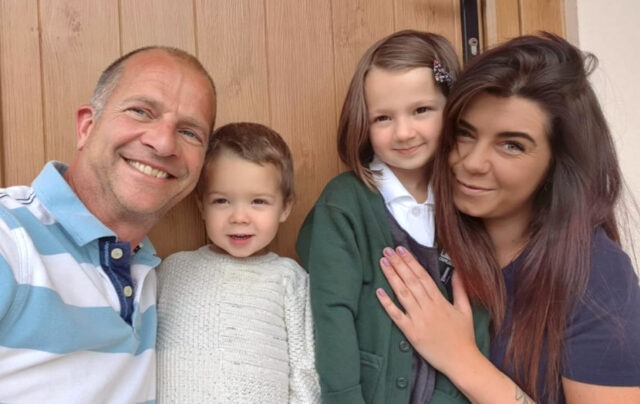
Treatment at home helped Nadine feel ‘well enough to work’
Nadine, from Devon, explains how being treated at home by Sciensus nurses allowed her to continue with many aspects of her normal life, including her job.
Nadine had always checked her breasts regularly for lumps, but it wasn’t until her husband noticed a change in the shape of her left breast that alarm bells began to ring. Later her GP also noticed some puckering and referred her for a mammogram.
“I could sense a change in atmosphere in the room, and then the radiographer said he could see something unpleasant,” Nadine recalls.
Nadine was diagnosed with breast cancer and had two operations to remove the tumour. The specialists were confident that no further treatment would be necessary, but the surgery revealed a bigger tumour than expected. Now Nadine would also need six months of chemotherapy, then radiotherapy.
Learning about the treatment options
Nadine met her oncologist to talk about her treatment options, which included Sciensus’ cancer treatment at home service.
“It blew me away that they had this kind of service,” says Nadine. “I’d never heard of treatment at home and I remember thinking, I can’t believe that’s possible together with wondering if it would be as good as hospital. I couldn’t imagine it would be the same treatment.”
The oncologist explained more about the service and reassured Nadine that being treated at home was safe, which is of paramount important to patients, and would also help to minimise the risk of infection from Covid.
“It sounded fantastic, so without hesitation I said yes – I felt so fortunate to be able to have it.”
The convenience of home treatment
Four of Nadine’s six cycles of chemotherapy were given at home by Sciensus’ specialist nurses and two were given in hospital so she could be monitored for a possible allergic rection. This meant Nadine was able to see the difference between receiving treatment at home and in hospital.
“It’s an hour and a quarter each way to the hospital from home, so it’s quite a journey, and the treatment time for me was extended because I chose to have a scalp cooling cap to try to keep my hair,” Nadine explains.
“I felt like having scalp cooling was a special treatment, which felt a bit awkward in hospital if I’m honest. Whereas when you’re in your own home, you feel in control and the machine for the scalp cooling treatment stayed there for the entire six months.”
Continuing with ‘life as normal’
For Nadine, one of the best bits of being treated at home was being able to carry on with normal family life as much as possible.
“My son’s routine hadn’t changed – by the time he got off the school bus I’d had my treatment and looked reasonably normal. On one occasion he met the nurse, which was good as they’re all so lovely. It did feel like the service was for our family, not just me.”
The other big part of her life that Nadine managed to continue was her job.
“I love my work and the thought of not working for six months was hard for me,” says Nadine. “I strongly believe that being treated at home helped me to be able to work because all the appointments were so precise and professionally organised. I could rely on that and be confident that I felt well enough to work.”

“It has a clinical feel from a professional point of view, but you also develop a very personal relationship. I’m quite private and I don’t always open up to people, but it was like having a friend there when you’re having treatment.”
Nadine – patient on service with Sciensus

Cancer
Receiving treatment from Sciensus at home is providing huge moral and psychological support for a patient and his family
After being diagnosed with cancer of the liver in July 2021, while working as an airline pilot in Vietnam, Ronald…

Cancer
‘Amazing’ Sciensus nurses help cancer patient feel relaxed and at ease
After being diagnosed with breast cancer at the height of the Covid-19 pandemic, Debbie says that Sciensus’ cancer care service…
Cancer
Building a relationship based on trust and professionalism
Catherine, from South Gloucestershire, is receiving her second round of chemotherapy with Sciensus. She says that the team delivering her…
